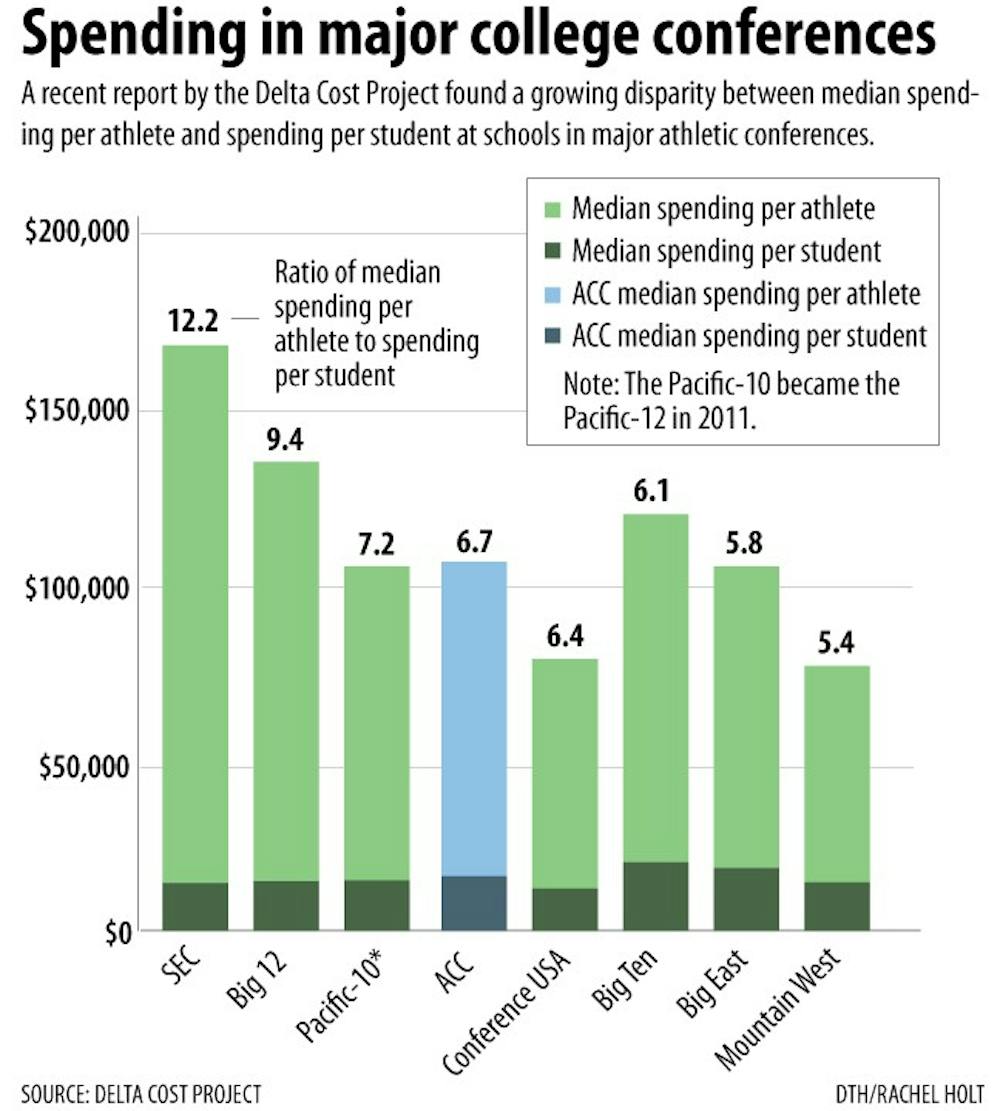While athletic budgets continue to expand and other resources for universities shrink, the disparity between athletic and academic spending has only further emboldened critics of big-time athletics.
A recent report on collegiate athletic spending indicated that universities spend as much as seven times more money on student athletes than non-athletes.
The findings of the report, which was produced by the Delta Cost Project, struck a chord with those who question the cost of collegiate athletics.
“This report underscores the need to consider different financial framework for college sports,” said Amy Perko, executive director of the Knight Commission on Intercollegiate Athletics, an organization that advocates academic and fiscal integrity for athletic programs.
According to the report, schools in the Football Bowl Subdivision spent a median of about $92,000 per student athlete — but only a median of about $14,000 per full-time equivalent student.
UNC, a member of the FBS, spends a total of $75.4 million annually on athletics. But with nearly 750 athletes in 28 different sports, UNC does not calculate spending per student athlete because it varies from sport to sport, said Martina Ballen, senior associate athletic director at UNC.
According to the Delta Cost Project, athletic spending has been increasing since 2005.
“Spending on athletes increases over time based on increases in the cost of food, travel, housing, equipment, scholarships, etc.,” Ballen said.
Knight Commission leaders are concerned that athletic spending is increasing at a rate twice as fast as academic spending.



